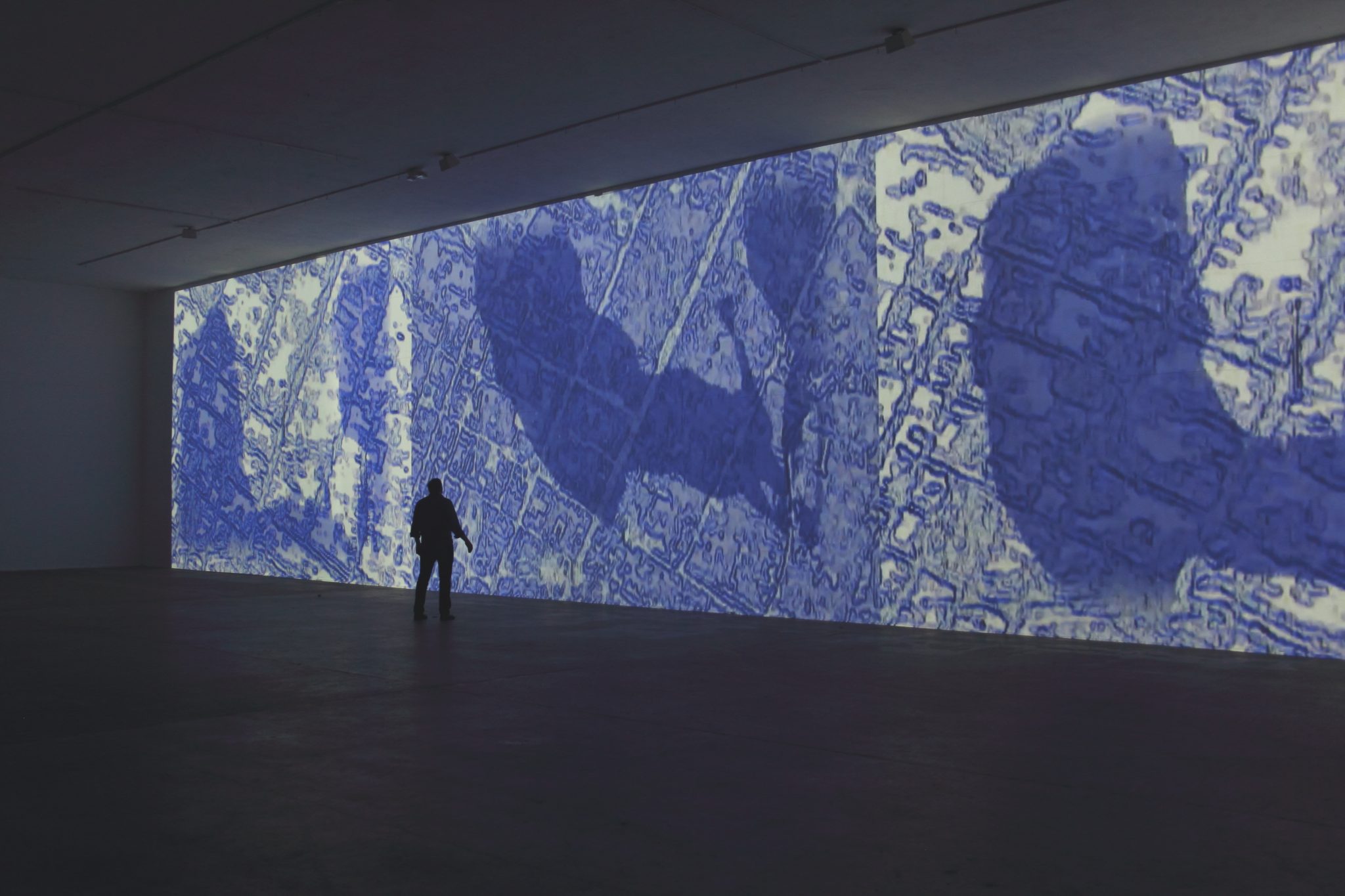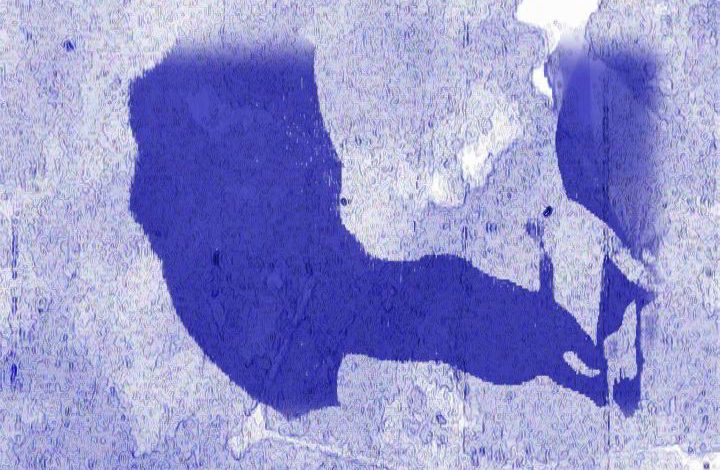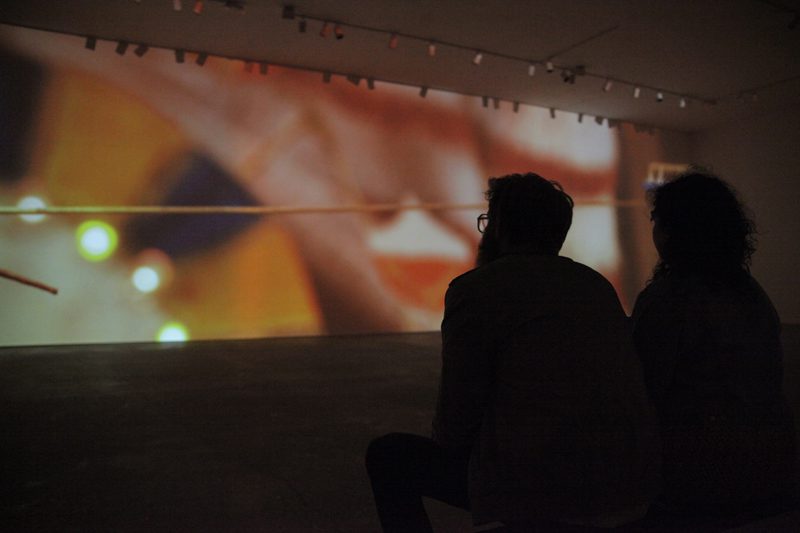Image capturing devices are mechanically and technically unique. The inherent characteristics of the mechanism influence the resultant image, and ultimately, our perception of the world.
Aerial photography, made common during WWI, introduced a new perspective of human activity in relationship to the land and others. Capturing images from the air ultimately changed the way humans perceive place as well as the people who inhabit these places. The extreme distance achieved through aerial photography created an objective, less connected, relationship between the observer (or fighter) and the subject of the image.
The video Aerial Umbrella is a composite of various layers. First, archival footage taken from aircraft flying over Poland was recolored to look like an architectural print. Second, using video shot from an aerial perspective in a green screen studio space, images of a woman running while carrying an umbrella were superimposed onto the map. Finally, an audio track fills in the context of the environment, introducing sounds of bombs falling from the aircraft. The woman is defenseless against the destructive devices, having only her umbrella to shield her from the bombs.
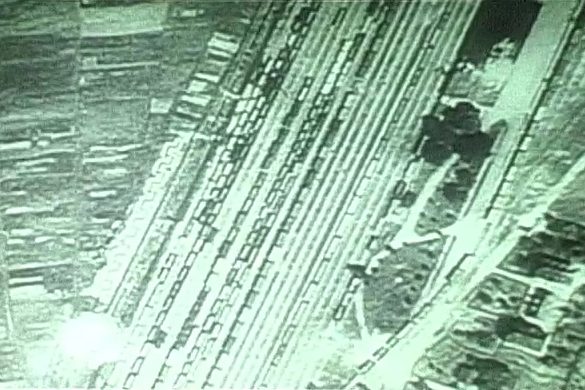
Listen to "War in the Air" on Thinking Allowed by Laurie Taylor on BBC Sounds
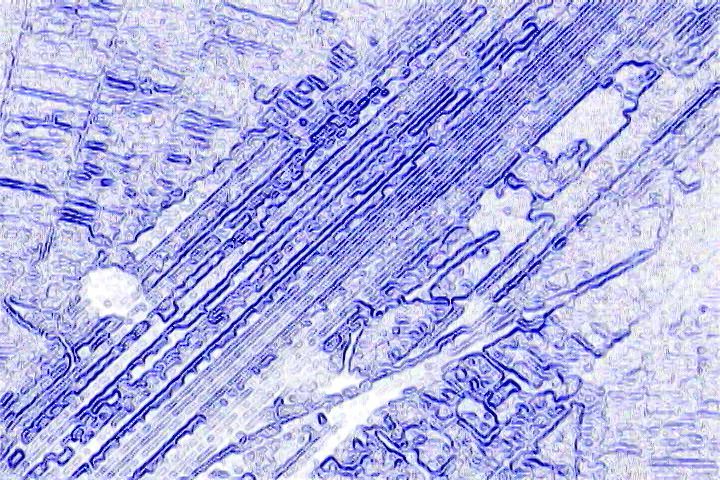
OFF SITE exhibition, 2019, atChris White Gallery
co-sponsored by Pop-Up KSQ, Deleware Museum of Art, and Chris White Gallery
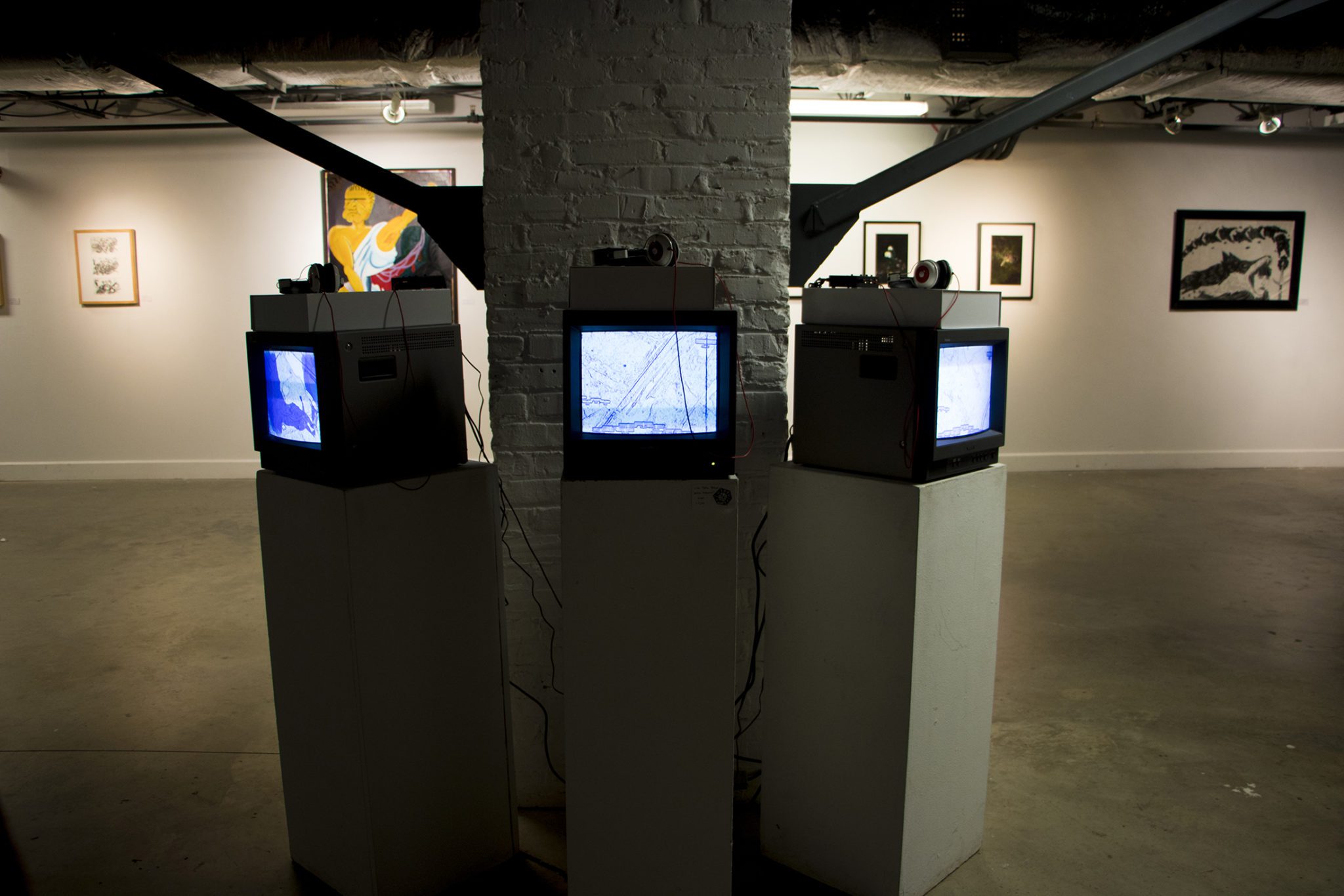
20/92 Video Festival
March 9-11th, 2017, juried by Icebox directors Ryan McCartney and Timothy Belknap
